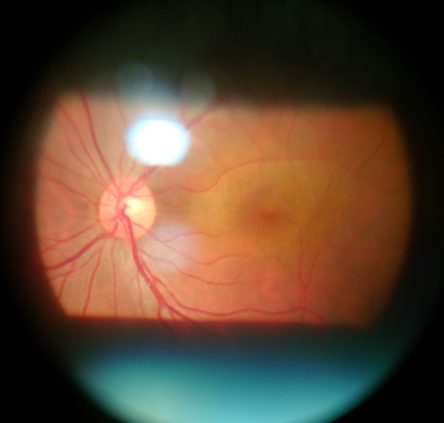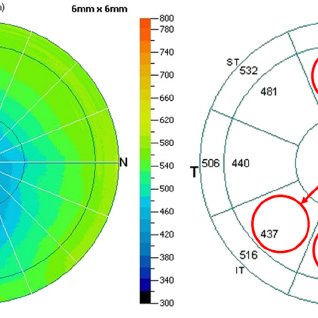What tests are conducted when an eye doctor suspects keratoconus?
First things first – Your medical history
Just like with a regular eye exam, your doctor will want to know your medical history. Research shows that there is a genetic link to KC – although it’s not a definitive cause or reason, it’s still good to inform your eye care provider with any history related to corneal disease that you are aware of. Your doctor may ask a series of questions related to your medical history including any information you may have of family members that may have keratoconus.
After the normal eye exam, these additional tests may be conducted:
Eye Refraction

This test uses special equipment, such as a phoropter, that measures your eyes to check for vision problems. You will be asked to look He or she may ask you to look through different lenses to help judge which combination gives you the sharpest vision. Some doctors use a hand-held instrument (retinoscope) to evaluate your eyes.
Slit-lamp Examination

This test helps evaluate the shape of your cornea and see any other potential problems. Your doctor shines a vertical beam of light to the surface of your eye and uses a low-powered microscope to view your eye. This test may be repeated after your eyes are dilated to help your doctor view the back of your eye.
Keratometry

This exam focuses a circle of light on your cornea and measures the reflection to determine the basic shape of your cornea.
Computerized Corneal Mapping

Special photographic tests, such as optical coherence tomography and corneal topography, record images of your cornea to create a detailed shape map of your cornea’s surface. The tests can also measure the thickness of your cornea.
After a KC test, one may feel slightly overwhelmed. It’s a lot of information at once. Here are some helpful questions to ask and discuss:
-
Symptoms: Any current or past discomfort in your eyes. Extra eye rubbing, any pain, blurred vision, seeing halos around lights.
-
Any other tests necessary? Information about your own specific diagnoses is key to finding the best treatment for you.
-
What treatments are available, and which do you recommend? Everyone’s diagnosis is different. Your doctor may have the best insight to what they believe will work best for you. Visit: How Keratoconus is Treated for more information about treatment options for keratoconus.
-
Do you have any brochures or other printed material I can take with me? Information is key to understand your diagnosis. You can order a free patient guide here to learn more about keratoconus.

